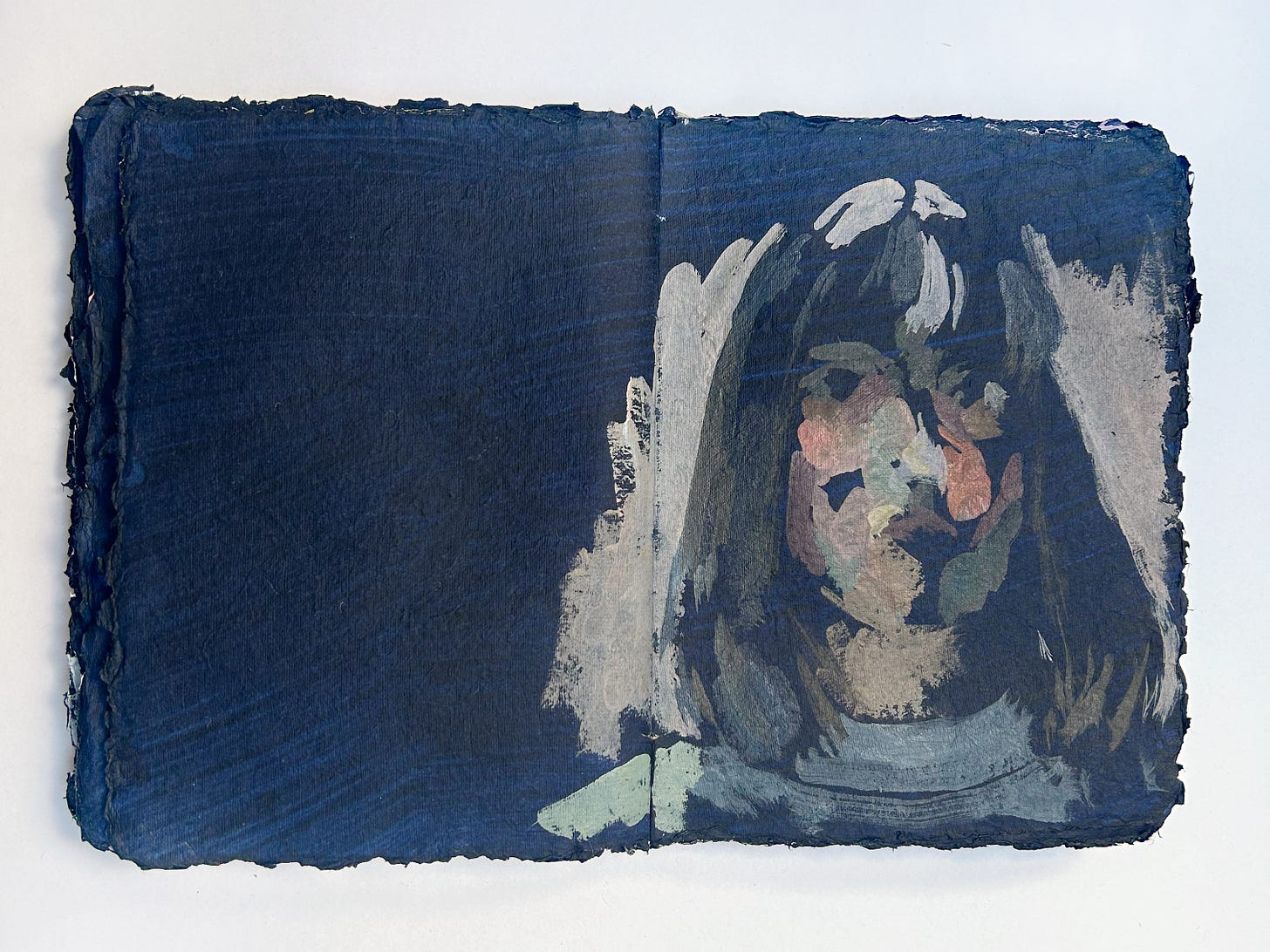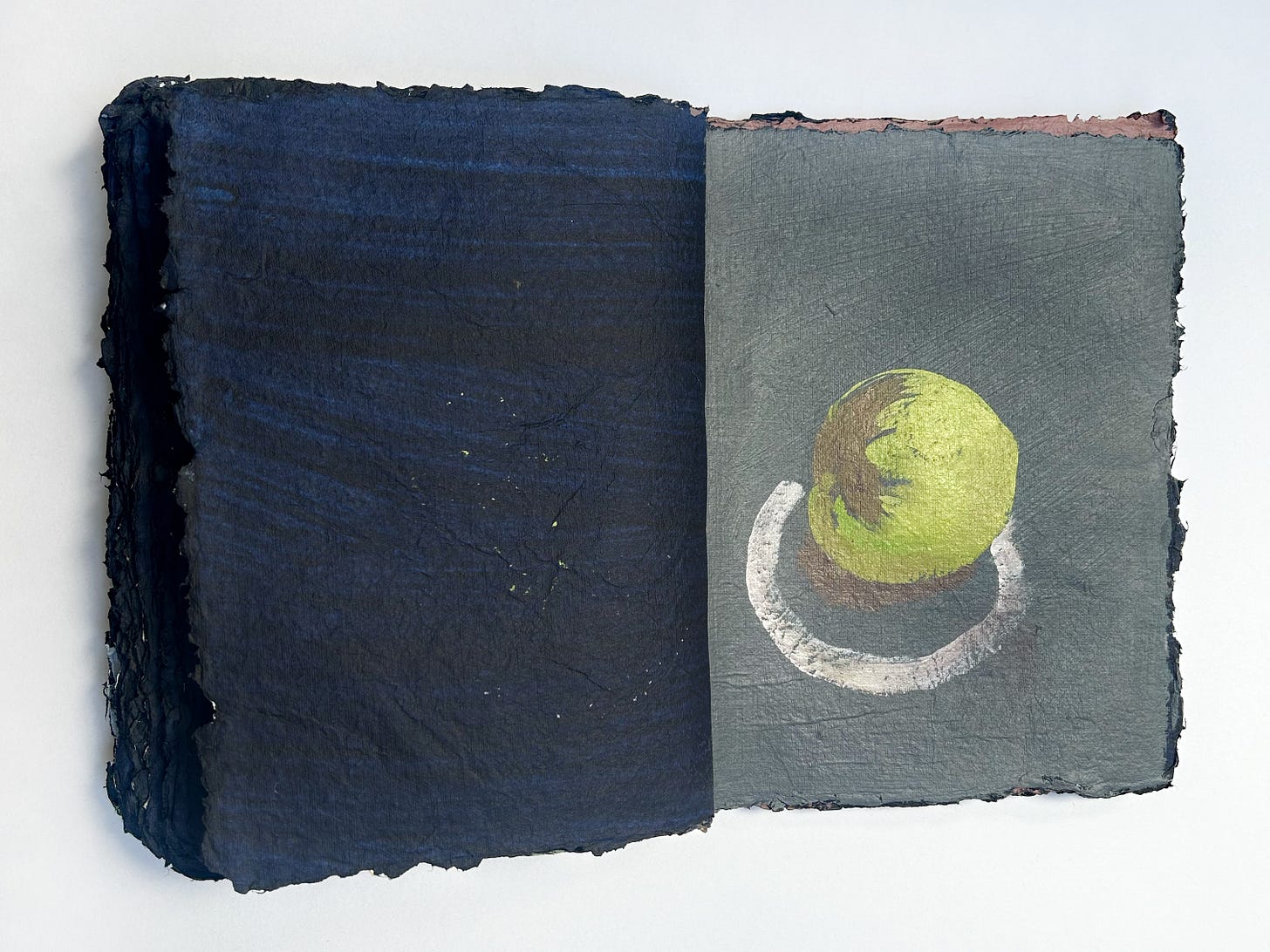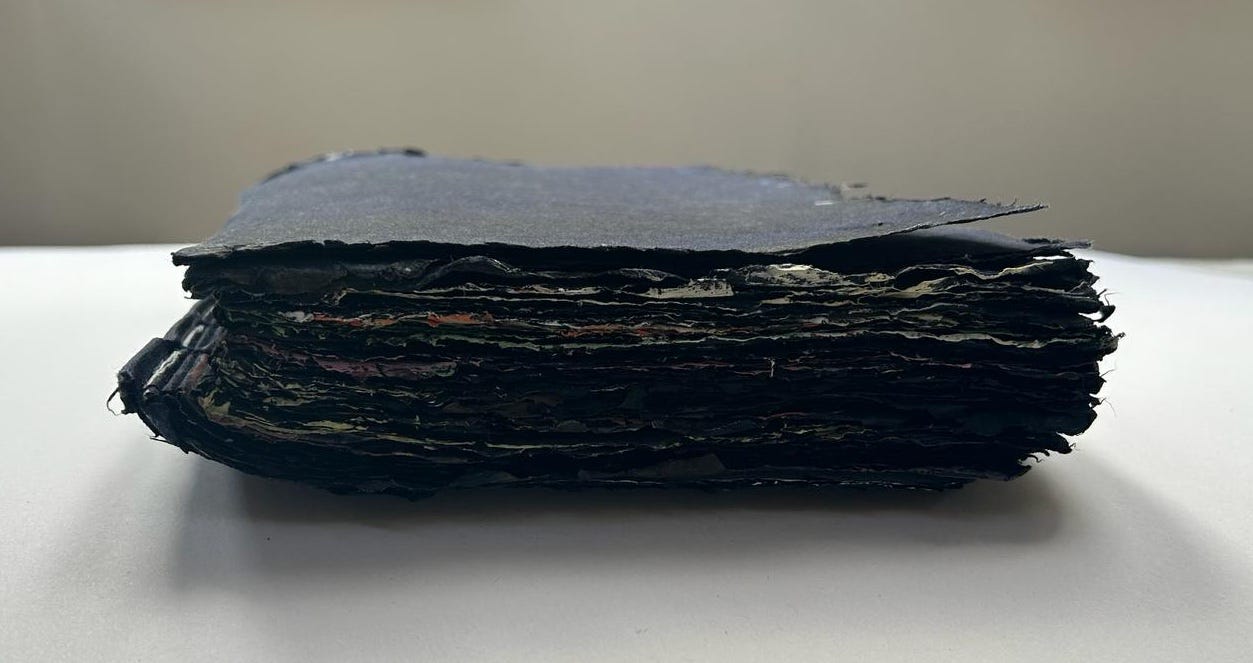Progress Through Iteration
Breaking Painting Habits Through Iterative Paintings
I recently set myself the challenge to fill a sketchbook with painted self-portraits, within a week. I wanted to work quickly, and to use the same subject matter to focus my painting and push myself to make visible progress.
I’m keen to dedicate time to develop paint as a visual and material language. I’m aware that habits often creep in to my current painting practice, particularly when using acrylic, and I’d like to push outside of my comfort zone and find new ways of working.
My hope was that by working in this way, each painting an iteration of the last, I’d find the freedom and space to try new ways of painting, and I’m excited by the way the sketchbook evolved.
In terms of subject matter, I wanted to paint something personal – I’m interested in creating an atmosphere that feels internal in some way, so painting myself seemed like the most sensible starting point. I knew I’d find it more challenging than painting, say, a personal object, because I often feel a certain pressure around self-portraiture, but I also knew that once I worked through that, I’d continue to find the subject interesting to paint. I don’t think you could ever really be finished painting yourself, everything feels like its constantly evolving and so a painting would have to be in continual flux.
After the first few paintings, I was having doubts. I didn’t really think that I liked the way the paintings were looking; they didn’t look like me, and I felt like I’d been looking at myself in the mirror too much. I considered stopping the sketchbook, wondering if the additional pressure of the subject being myself was going to be more damaging than helpful to trying to progress my painting, but there was something in me that told me I just needed to push through it a bit more.
I’m pleased that I did. I think once I accepted that it wasn’t going to be a book of paintings that necessarily looked a lot like me, I let myself play with the paint a bit more.
The paper I was working on, a Khadi Sketchbook, was pre-dyed with indigo. After a few paintings, I realised I didn’t want to blindly take for granted that I was painting onto such a dark surface, so started to paint lighter coloured grounds on some pages, and on the pages where I worked directly against the indigo, I started to make more of an effort to incorporate the indigo, rather than ignore it. I found my paint application changing depending on the ground – I tended to apply the acrylic more thickly, with a dry brush, against the indigo, but preferred to work in more dilute, watery layers on the lighter pages. I began to incorporate the removal of paint from the surface with a rag into the painting process.
I tried to find a moment within each painting where I particularly liked the interaction of colours or brushstrokes, and to use that as the starting point for my next painting. As a specific example, I found that I enjoyed painting wet into wet, with a thicker consistency, desaturated colour, over a watery, more vibrant underlayer.
“Schjerfbeck said, more than once, that when she became too involved with a portrait, she would break off to do a still life. She found a freedom in still lifes that allowed her to return to people.” Anna-Maria von Bonsdorff on Helene Schjerfbeck
When I began to feel tired, I switched to painting an apple, or a lime. Compared even to the quickly painted portraits, these paintings were very simple. Maybe that selection and simplification was a result of feeling tired, but each time I found they provided an energy for me to again paint a self-portrait, and I could take some of this economy of mark as my clue for the next painting.
By the end of the 5 days I had covered 65 pages. At no point did I feel like I was filling pages for the sake of it - on the contrary, the momentum carried me forwards, and seeing the completed sketchbook reminded me of the opposite truth: that all the times I hadn’t painted, hadn’t resulted in a sketchbook.
We Invite You…
Commit to an intent: Give yourself a challenge and workshop your way through a sketchbook. Structures that might help you might include:
Time: Commit to a page or number of pages a day for x number of days
Materials: Commit to working in a certain material. Taking away some freedoms (ie. in my case, I only worked in acrylic paint), forces you to push the material.
Subject Matter: To make sure you don’t wriggle out of your commitment, take into account where you will be and therefore what access you have to subject matter. Set up a station to work at so there is one less reason to resist. Remember drawing the same thing, repeatedly, can force you to be creative and enable your work to evolve. If you painted a red page everyday, where would your red pages ends up?
If You Can…
Go and see Auerbach’s Charcoal Heads at the Courtauld









This dropped into my in box at exactly the right time as I have recently been contemplating painting a self portrait. Your thoughts during the process reminded me how I felt about trying to do so last time and why I have been avoiding it. The idea of time and space restraints has always appealed but my attempts at daily still life painting has always been a disappointment. I found it difficult to get over the connection between wanting a ‘finished’ piece and an exploration even when using tiny boards. Your personal connection with the sum of parts, ie the sketchbook itself, appears to have had a liberating effect, which is interesting and motivating, thank-you.
Really beautiful work Rowan, and so fascinating to see it evolve and grow over time. This has been such an interesting project to read about. I tend to shy away from self-portraits for a number of reasons, but this very intriguing approach is making me think twice. I already have a sketchbook dedicated to still life, so why not try this out too? Thanks for sharing!